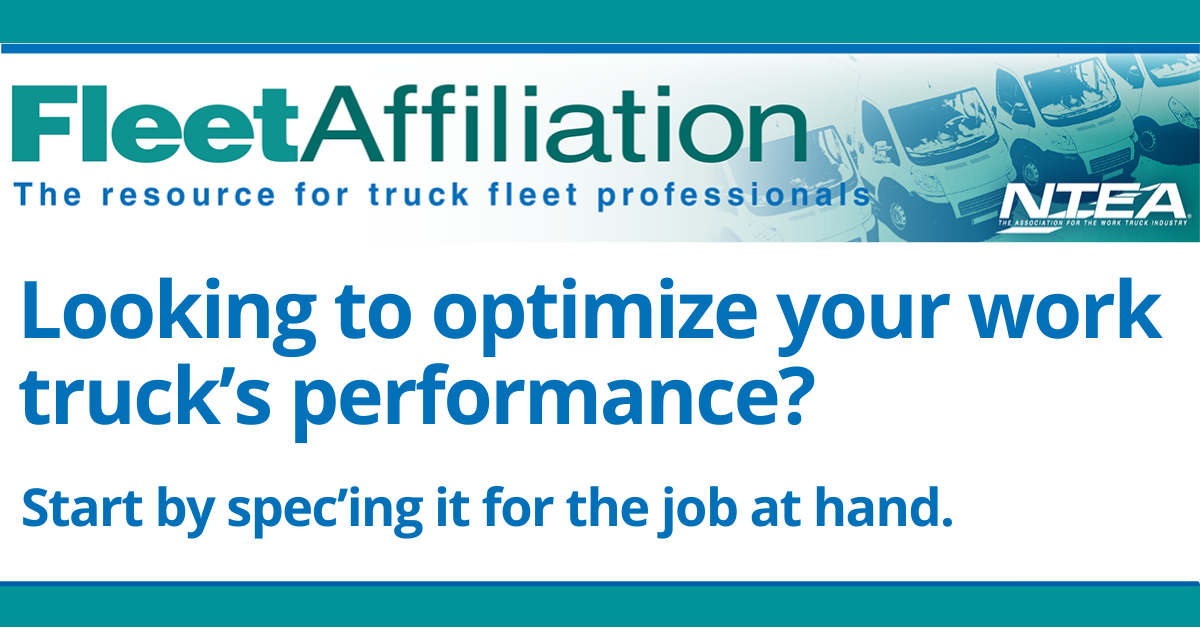
Published in October 2021 Fleet Affiliation
With the chip shortage, increased ordering windows, chassis availability, and upcoming regulatory compliance, today’s vocational truck sector is in a bit of flux. But it’s still important for fleet purchasers to understand job requirements and optimize the performance of new and available assets.
Normally, the procurement process starts with research – particularly to understand the tasks that will be required of the vocational vehicles that make up a fleet. Next, the fleet purchaser must design and purchase a legally safe work truck. Finally, the fleet purchaser must understand the bottom line and fully optimize performance. This is done by understanding and matching the completed vehicle to the job requirements.
Getting started, beyond the beginning
If you have followed this column, we have talked about the importance of drive and duty cycle, proper two-sided communication, and how to collect information. Moving forward, when specifying the next commercial truck, the end goal should be to have a completed vehicle designed for the intended application.
This is where research and understanding are critical. Often these trucks are purpose-built, and rarely purchased in a single stage. It is important to understand the two main components of a completed vehicle. These vehicles include the first unit (the chassis) and the second unit (the truck body and mounted equipment). While there are steps in between, matching the first and second units will ultimately end with a completed work truck.
The chicken or the egg?
As mentioned, the two main components of a work truck are the first and second units. Which one should be procured first? These days, this can be a difficult question to answer; however, the second unit needs to be defined and designed before a chassis
can be selected.
Order windows and chassis availability can be of some concern; however, several challenges can occur if these processes are not optimized. Chassis spec’ed too small for the job can become easily overloaded, resulting in certification and maintenance issues. Chassis spec’ed too big for the job can carry an excessive first unit cost as well as other associated expenses, including weight and licensing.
The process
Match the big picture – which includes correct first and second unit designs – and match the completed vehicle to the intended application. This will increase productivity, reduce operating costs, extend vehicle life and most importantly, improve safety.
It is important to take the guesswork out of vehicle design and follow a logical process. Several pitfalls to avoid:
- buying a chassis and making it work
- making decisions based on what you see others doing (remember, it is important to understand your organization's mission)
- relying on what has been done in the past to meet current needs (vehicles can carry a long service life and your organization’s needs may have changed over time).
Putting it together
When designing a new work truck, one of your primary requirements should be to ensure that the completed product will be safe. While this may seem very straightforward, vehicle safety is actually quite complex.
Mandated vehicle safety systems and components can be severely impacted by the vehicle upfitting process. The vehicle OEMs provide upfitters with documentation in the form of incomplete vehicle documents and body builder books that guide in this area.
While the ultimate responsibility for compliance falls on the upfitter or vehicle modifier, you should be aware of the general requirements and avoid designing a vehicle that will knowingly place the vehicle out of compliance.
If you are in doubt as to the compliance issues associated with a potential design, partner with a reputable upfitter to work out any potential issues. Lastly, before taking final delivery, make sure the vehicle is properly certified with all required documentation.
Looking for more fleet insight? Contact Chris Lyon, NTEA director of fleet relations at chris@ntea.com.
